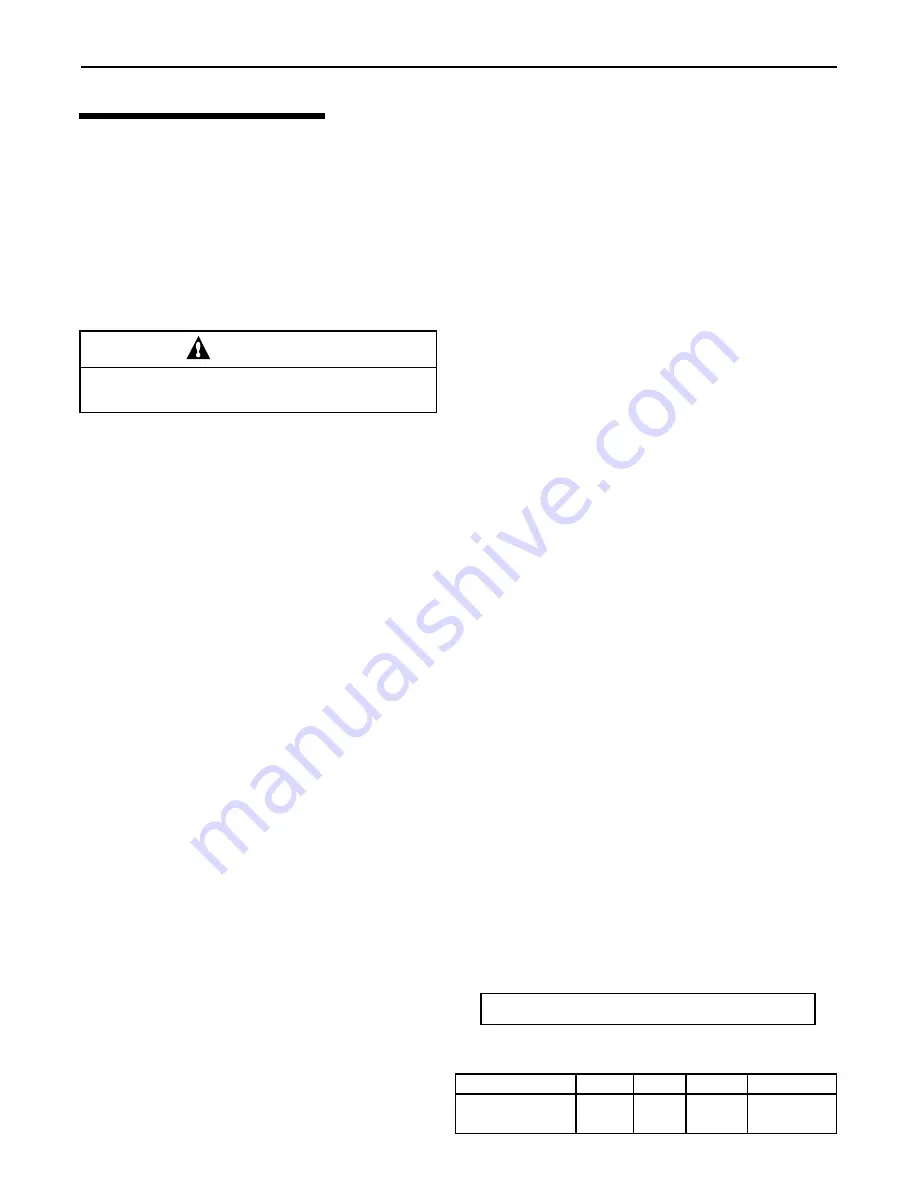
P/N 471438
Rev. A 2-4-2000
CHEMICAL BALANCE
POOL AND SPA WATER
Your MiniMax pool heater was designed specifically
for your spa or pool and will give you many years of
trouble free service provided you keep your water
chemistry in proper condition.
Three major items that can cause problems with your
pool heater are; improper pH, disinfectant residual, and
total alkalinity. These items, if not kept properly bal-
anced, can shorten the life of the heater and cause
permanent damage.
WHAT A DISINFECTANT DOES
Two pool guests you do not want are algae and
bacteria. To get rid of them and make pool water
sanitary for swimming - as well as to improve the
water's taste, odor and clarity - some sort of
disinfectant must be used.
Chlorine and bromine are universally approved by health
authorities and are accepted disinfecting agents for
bacteria control.
WHAT IS A DISINFECTANT RESIDUAL?
When you add chlorine or bromine to the pool water, a
portion of the disinfectant will be consumed in the
process of destroying bacteria, algae and other oxidiz-
able materials. The disinfectant remaining is called
chlorine residual or bromine residual. You can deter-
mine the disinfectant residual of your pool water with a
reliable test kit, available from your local pool supply
store.
You must maintain a disinfectant residual level adequate
enough to assure a continuous kill of bacteria or virus
introduced into pool water by swimmers, through the
air, from dust, rain or other sources.
It is wise to test pool water regularly. Never allow
chlorine residual to drop below 0.6 ppm (parts per
million). The minimum level for effective chlorine or
bromine residual is 1.4 ppm.
pH -
The term pH refers to the acid/alkaline balance of
water expressed on a numerical scale from 0 to 14. A test
kit for measuring pH balance of your pool water is
available from your local pool supply store; see Table 1.
Muriatic Acid has a pH of about 0. Pure water is 7
(neutral). Weak Lye solution has a pH of 13-14.
RULE:
7.4 to 7.6 is a desirable pH range. It is
essential to maintain correct pH, see Table 2.
Users Section
If pH becomes too high (over alkaline), it has
these effects:
1.
Greatly lowers the ability of chlorine to destroy bacteria
and algae.
2.
Water becomes cloudy.
3.
There is more danger of scale formation on the plaster
or in the heat exchanger.
4.
Filter elements may become blocked.
If pH is too low (over acid) the following
conditions may occur:
1.
Excessive eye burn or skin irritation.
2.
Etching of the plaster.
3.
Corrosion of metal fixtures in the filtration and recircu-
lation system, which may create brown, blue, green, or
sometimes almost black stains on the plaster.
4.
Corrosion of copper in the heater, which may cause
leaks.
5.
If you have a sand and gravel filter, the alum used as a
filter aid may dissolve and pass through the filter.
CAUTION: Do not test for pH when the chlorine
residual is 3.0 ppm or higher, or bromine residual is
6.0 ppm or higher. See your local pool supply store
for help in properly balancing your water chemistry.
RULE: Chemicals that are acid lower pH. Chemicals
that are alkaline raise pH.
ALKALINITY High - Low:
"Total alkalinity" is a measurement of the total amount of
alkaline chemicals in the water, and control pH to a great
degree. (It is not the same as pH which refers merely to the
relative alkalinity/acidity balance.) Your pool water's total
alkalinity should be 100 - 140 ppm to permit easier pH
control.
A total alkalinity test is simple to perform with a reliable test
kit. You will need to test about once a week and make proper
adjustments until alkalinity is in the proper range. Then, test
only once every month or so to be sure it is being maintained.
See your local pool dealer for help in properly balancing the
water chemistry.
Heat exchanger damage resulting from chemical
imbalance is not covered by the warranty.
WARNING
pH Chart
Table 1.
Strongly Acid Neutral
Strongly Alkaline
0 1 2 3 4 5 6 7 8 9 10 11 12 13 14
7.2
6.8 7.0
7.4 7.6
7.8
8.0 8.2 8.4
Add Soda Ash or
Sodium Bicarbonate
Add Acid
Marginal
Ideal
Marginal
pH Control Chart
Table 2.
7
Содержание PacFab MiniMax 100
Страница 28: ...P N 471438 Rev A 2 4 2000 33 14 EXPLODED VIEW 23...
Страница 30: ...P N 471438 Rev A 2 4 2000 25 NOTES...
Страница 31: ...Rev A 2 4 2000 P N 471438 26 NOTES...













































